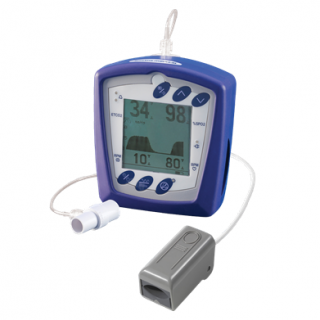What’s involved in breathing assessment?
Capnometry and Oxymetry – measures carbon dioxide and oxygen levels at rest and challenge.
Lung Function Screen – looks for signs of possible asthma or COPD.
Evaluating Breathing Pattern – tests like the MARM are used to assess the diaphragm and general muscle co-ordiantion at rest and when challenged.
Questionnaires – questionnaires can help to measure the severity of dysfunctional breathing and identify underlying conditions such as anxiety and sleep apnea.
Breath Holding Time – breath holding time is an indirect measure of breathlessness, hyperventilation and breathing drive.
Heart Rate Variability Assessment – look at how breathing interacts with the circulatory system and the autonomic nervous system.
Airway screen – looks at the adequacy and function of the tongue, throat and nose.



